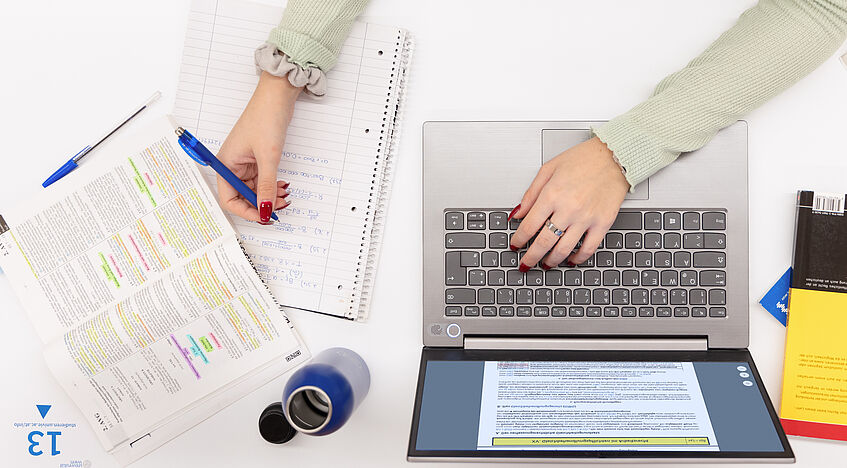AI in studies and teaching
What is AI and how do I deal with it in my studies? You can find general answers to these questions in the following Q&A. Detailed information will be provided by your teachers, examiners and supervisors.
OK with AI?!
Learn more about unlocking the potential of AI tools and maintaining integrity in the blog of #univie.
-
What is artificial intelligence (AI)?
AI refers to the ability of machines to imitate human abilities such as thinking, learning and creativity. AI systems come in many forms, from pattern recognition to large language models (e.g. for chatbots). These are playing an increasingly important role in studies and at work.
-
What courses on AI are available at the University of Vienna?
Recommended courses for the winter semester 2024:
- VO Machines That Understand? Large Language Models and Artificial Intelligence (5 ECTS), ideal as an alternative extension or elective extension course
- Extension curriculum ‘Understanding and Shaping Digitalisation’ (15 ECTS), ideal for bachelor's programmes with EC
-
Can I use AI tools for my studies?
This depends on the subject and the course. Teachers decide whether and how AI tools may be used. It is important that it is clear which of your achievements they are. Read the descriptions in u:find. If no information is provided, ask in the first unit.
-
Does the University of Vienna have AI tools for students (Copilot)??
Yes, you have free access to Microsoft 365, which includes Copilot (GPT-4). This can be used for various tasks during your studies. Your data is protected by ‘Enterprise Data Protection’.
You can find instructions and information on how to use it here:
-
What should I bear in mind when using AI tools?
- Do not enter any personal data into AI tools. This applies to your own data and that of other people (e.g. when transcribing interviews or analysing data).
- Check the results carefully, as AI tools can also provide incorrect or invented information. Large Language Models generate texts based on statistical methods. They are not ‘consciously aware’ of the content. Therefore, they are not the authors and their results are not a source of (scientific) truth.
- Document your inputs and the results. Your teachers and supervisors will provide information on the rules of good scientific practice.
-
What changes when writing scientific papers?
Discuss with your supervisors whether and how AI tools may be used. Independent work requires the complete documentation of all tools and the correct citation of sources. If you are unsure, contact your teachers and supervisors.
-
I have further questions about ...
-
What happens if I used AI tools even though they were not allowed?
This is considered cheating. If you are suspected of cheating, a procedure will be initiated in which you can express yourself. If it is determined that unauthorised tools have been used, this will be noted in the summary certificate (X).
-
How was this text written?
The raw text was processed with OpenAI Chat-GPT on 27 September 2024 with the following prompt: ‘Take the following CONTEXT and revise it. It should be optimised for a website aimed at students. After reading the text, they should have memorable information about how the University of Vienna regulates the use of AI in studying and teaching. Create the text in the form of FAQs and use short sentences for each one.’ The result was checked and edited by the author. The English translation was done using DeepL.

